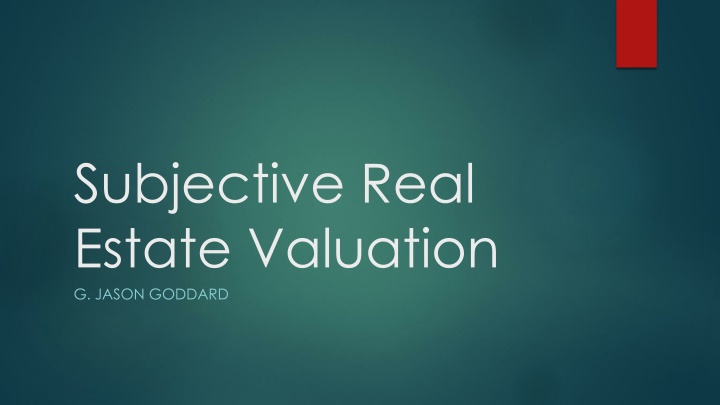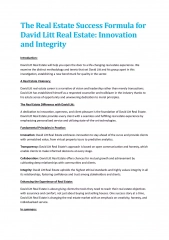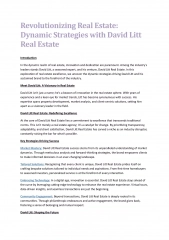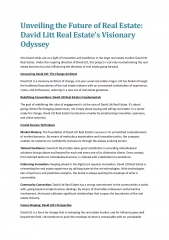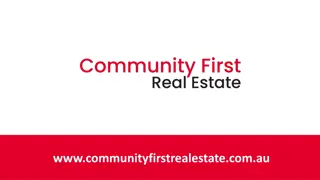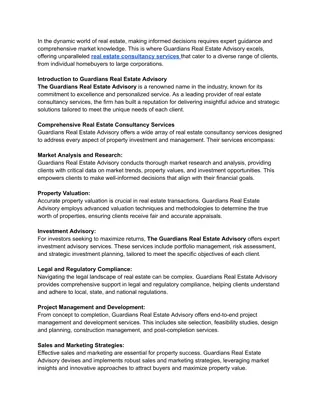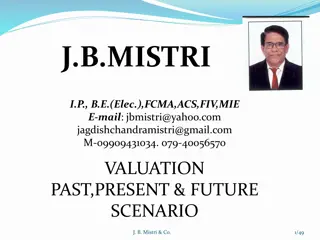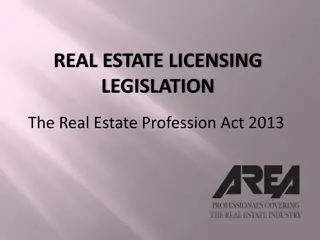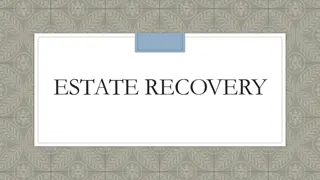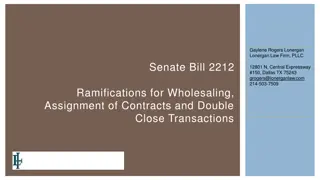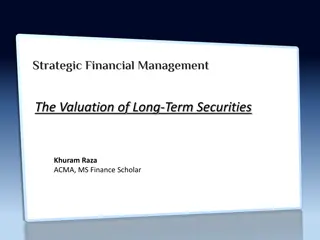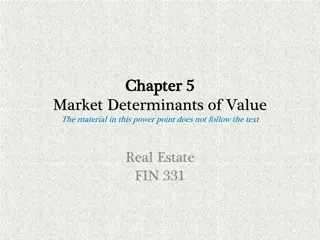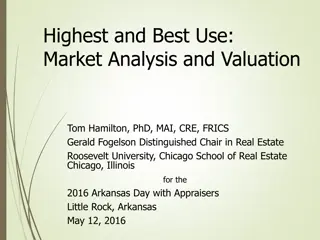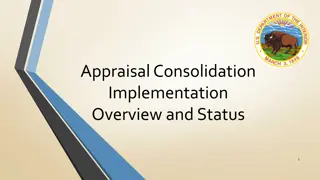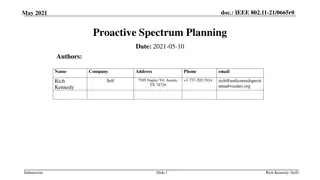Subjective Real Estate Valuation Spectrum
In this detailed exploration, delve into the spectrum of subjective and objective valuation in real estate, from historical origins to modern economic theories like the Austrian School. Understand the concept of value subjectivity and its implications in property assessment, illustrated through the IRV formula, Menger's Satisfaction Scale, and Shackle's Possibility Curve.
Download Presentation

Please find below an Image/Link to download the presentation.
The content on the website is provided AS IS for your information and personal use only. It may not be sold, licensed, or shared on other websites without obtaining consent from the author.If you encounter any issues during the download, it is possible that the publisher has removed the file from their server.
You are allowed to download the files provided on this website for personal or commercial use, subject to the condition that they are used lawfully. All files are the property of their respective owners.
The content on the website is provided AS IS for your information and personal use only. It may not be sold, licensed, or shared on other websites without obtaining consent from the author.
E N D
Presentation Transcript
Subjective Real Estate Valuation G. JASON GODDARD
Chapter 1 Outline Chapter Highlights The range of values for real estate The spectrum of valuation Austrian value Subjectivity: historical origins Shackle s Possibility Curve: original model & modern context Investor choice example: land development
Spectrum of Valuation Subjective Objective Most everyone else is somewhere in between Physiocrats Radical Subjectivism Late 18th century France Quesnay, Condorcet, Turgot 20th Century Austrian School Lachmann, Shackle Value is embedded in the cost of production The Future is unknowable
The IRV Formula Income = Rate (cap) * Value 150,000 $ The IRV Formula Rate = Income/Value 7.00% I = R * V Value = Income/Rate 2,142,857 $ Income = rate * value Rate = income/value Value = income/rate
Subjectivity in Value Austrian Economic Theory has much to say about the subjectivity in value. The same object can be valued quite differently by different actors Subjective factors: different satisfactions have different degrees of importance to us Objective factors: which satisfactions of concrete needs depends on our command of a particular good
Menger Satisfaction Scale Carl Menger: Numerical Representation of Satisfaction of Wants (pg. 127) Good I Good II Good III Good IV Good V Good VI Good VII Good VIII Good IX Good X 10 9 8 7 6 5 4 3 2 1 9 8 7 6 5 4 3 2 1 0 8 7 6 5 4 3 2 1 0 7 6 5 4 3 2 1 0 6 5 4 3 2 1 0 5 4 3 2 1 0 4 3 2 1 0 3 2 1 0 2 1 0 1 0 0 Notes: Goods ranked 10 are things on which life depends Goods ranked 9-0 are less and less important If Good I is food and Good V is tobacco, tobacco is desired once need for food is satisfied whereby future consumption would only register as a 6 on the importance scale. Trade occurs when two parties exchange for items where they feel item obtained is higher than item exchanged
Shackle Possibility Curve Y _ Y YL YG Y0 G GN XL XG
Shackle Possibility Curve The G axis represents desired-ness (his term) and G=0 represents situations where the chooser's existing knowledge is adequate to make a decision. The Y axis represents disbelief, such that the further up the Y axis you go, the larger the gap is between the chooser's existing knowledge and the leap needed to get to a particular choice (Shackle calls this un-knowledge). The wider this gap the more room for variability. His graph also allows for "news from the field" where the chooser may be temporarily swayed in a negative or positive way by current events. Think of markets crashing and people all trying to sell at the same time. YL is news from the field that results in a loss of focus, while YG is news that results in a gain of focus. XL and XG are the intersections on the curve that set the boundaries of acceptability (range of possible values).
Highest and Best Use: Market Data Rentable Square Feet Rent per Square Foot Operating Expense Ratio Avg. NOI Growth per Annum Required Return Total Construction Cost per Sq. Ft. Office Retail 10,000 $ 24.00 8,000 $ 30.00 40% 3% 10% 50% 3% 10% $ 200.00 $ 200.00
Highest and Best Use: Profit Comparison Rent Expenses Cash Flow Cap Rate Property Value Cost Residual Office Retail $ 240,000 $ 96,000 $ 144,000 7.00% $ 2,057,143 $ 2,000,000 $ 57,143 $ 240,000 $ 120,000 $ 120,000 7.00% $ 1,714,286 $ 1,600,000 $ 114,286
Highest and Best Use: Revised Estimates Rent Expenses Cash Flow Cap Rate Property Value Cost Residual Office Retail $ 240,000 $ 96,000 $ 144,000 $ 240,000 $ 120,000 $ 120,000 7.50% 7.50% $ 1,920,000 $ 2,000,000 $ (80,000) $ 1,600,000 $ 1,600,000 $ -
Chapter 1 Questions Questions for Discussion Describe the three forms of value. How does each methodology contain subjective elements? Describe the Shackle Possibility Curve in your own words. How is this model helpful in describing why real estate values can differ depending on the market participant? What are the components of the spectrum of valuation? Provide examples of two schools of thought at either end of the spectrum. Describe where you might see yourself on this spectrum. Elaborate on the components of IRV. Describe how each term is dependent on the other two variables. Provide other examples of highest and best use methodology. In what situations other than real estate could this model also be employed?
Chapter 1 Questions Questions for Discussion Research the Physiocrats on the internet. What other interesting ideas did they originate? Provide an example of a recent trade that you made (real estate or otherwise) using the Menger Satisfaction Scale framework. Does either the Austrian or Keynesian Schools claim Shackle as one of their own? Research and discuss. As you drive around your home community, what are some good examples of real estate investment properties? Describe when news from the field made you change your mind on a purchasing decision. How far did your final price change for what reasons?
Chapter 1 Market Vignette Questions for Discussion Itemize some factors that might sway the appraisers in this case in their opinions of value? Construct a direct capitalization model that shows how the seller and buyer came to their value conclusions. Explain how this market vignette is the Shackle Possibility Curve in action. What would you advise Betty and Veronica to do in this case? How does this case illustrate the point that the lending institution should be ordering the final appraisal for this transaction as opposed to either the buyer or the seller?
